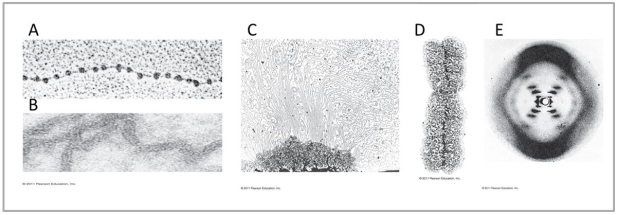Multiple Choice

The images above are of DNA at various levels of coiling and folding. Use this image to answer the questions below.
-For a science fair project, two students decided to repeat the Hershey and Chase experiment, with modifications. They decided to label the nitrogen of the DNA, rather than the phosphate. They reasoned that each nucleotide has only one phosphate and two to five nitrogens. Thus, labelling the nitrogens would provide a stronger signal than labelling the phosphates. Why won't this experiment work?
A) There is no radioactive isotope of nitrogen.
B) Radioactive nitrogen has a half-life of 100 000 years, and the material would be too dangerous for too long.
C) Avery et al. have already concluded that this experiment showed inconclusive results.
D) Although there are more nitrogens in a nucleotide, labelled phosphates actually have 16 extra neutrons; therefore, they are more radioactive.
E) Amino acids (and thus proteins) also have nitrogen atoms; thus, the radioactivity would not distinguish between DNA and proteins.
Correct Answer:

Verified
Correct Answer:
Verified
Q2: A biochemist isolates, purifies, and combines in
Q4: The spontaneous loss of amino groups from
Q14: What is the function of DNA polymerase
Q29: Why do histones bind tightly to DNA?<br>A)
Q43: Which of the following sets of materials
Q49: What is the role of DNA ligase
Q51: Avery et al. showed that DNA was
Q52: At a specific area of a chromosome,
Q55: Cytosine makes up 42% of the nucleotides
Q57: Eukaryotic telomeres replicate differently than the rest